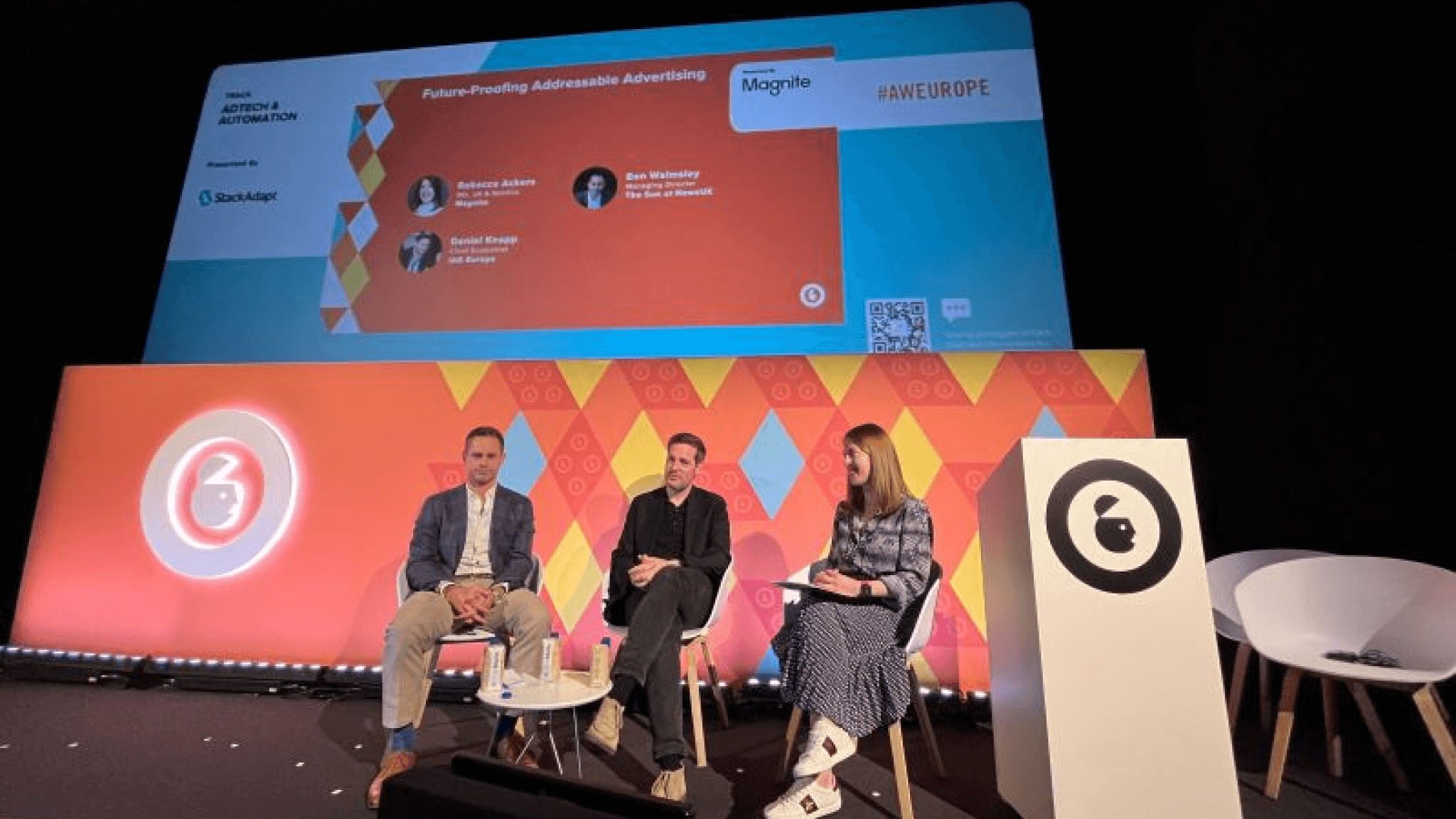
AdWeek Europe 2022 recap: Future proofing an industry
Robert Bowstead
June 16, 2022 | 5 min read
There’s no doubt that many who attended Advertising Week Europe 2022 will be thinking carefully about the upcoming changes to how our industry tackles the topic of identity. The prospect of increasing ‘signal loss’, centred around the deprecation of third party cookies, is bringing both opportunities and challenges in the bid to future proof addressability, execution and measurement.
Here’s a look back at some of the main themes that dominated the event and will continue to be a key focus in the months (and possibly years) ahead.
The future of addressability is now
“In the world of first party data…many see the onus on publishers who have been faster and more innovative than others in the value chain to build solutions. So there is an opportunity to shift value towards publishers to monetise their audiences better, but execution is hard” Daniel Knapp, Chief Economist at IAB Europe
In order to improve the execution layer to make the most of valuable first party data, The Sun’s MD Ben Walmsley made the point that there are “four broad applications of publishers’ first party data.” These applications include seller-defined audiences, direct deals, publisher alliances that offer scale and standardisation, and third party connectors of data, with these all relying more on close collaboration between buy-side, sell-side and adtech players.
They long to be…close to you
Advertisers want to be closer to publishers. Talk of more direct deals to the development of seller-defined audiences, and the rise in clean rooms were just some examples of more direct buy-sell side relationships. For instance, the trend in supply-path optimisation (SPO) illustrates how advertisers want to reduce barriers to publishers so they can work more strategically with better data enablement, better curation, and better execution. This is why SSPs are so crucial, providing the protections and controls needed to preserve publishers’ data, their consumers’ privacy, and their ability to leverage that valuable data.
Measurement and paying more attention
Attention was a dominant theme when it came to measurement at AdWeek Europe 2022; from the importance of creative innovation in improving attention, the dominance of TV across multiple connected devices for grabbing consumers’ attention, and the challenges of measuring engagement. With consumers moving seamlessly across devices, screens, and channels, developing common metrics of attention will be a key industry challenge going forward.
Magnite’s VP of Demand in EMEA Graeme Lynch took part in a panel discussion around “Better Data, Better Decisions: Rethinking Campaign Measurement” specifically discussing how data, collaboration and programmatic innovation is driving omnichannel measurement forward. With the expectation that digital is more measurable, bridging the gap between traditional and new media is becoming critical when it comes to real time insights:
“That realtime aspect is so key that we can, at any moment, step in and help improve the performance of a campaign, look at how a campaign is delivering and then make a decision at the right moment.” Graeme Lynch, VP Demand in EMEA at Magnite
Growing CTV Opportunities
There were a multitude of talks around connected TV (CTV) advertising too, including an interview with Magnite’s MD for CTV in EMEA Ed Wale titled “CTV: Measuring the incremental reach.” Within the talk, Ed summarised much of what’s happening in CTV from the challenges of understanding hybrid viewing, the value of CTV audiences, and how as a digitally enabled channel, CTV lends itself well to programmatic trading. As TV continues to evolve, we’re seeing the rise of AVOD and FAST services, with adtech enabling streaming publishers and smart TV manufacturers to transform the way they build their ad breaks, provide advertisers with greater controls, and drastically improve the streaming experience for their viewers.
Honourable mentions
Other key highlights from the event included contextual innovation, retail media and creative development. For instance, innovation in contextual intelligence and targeting is providing both complementary and alternative audience targeting options. Retail media on the other hand is providing an example of how vertical-specific media networks could provide new targeting options with the latest example being in travel with the Marriot Media Network. And finally, having spent the past decade embracing placement, keyword and audience enhancements, there’s a growing appreciation for creative development , testing and embedding data into the creative process.
In what is increasingly looking like a transformational era ahead in digital advertising, collaboration will be critical in future proofing our industry. Audience solutions will be needed across probabilistic and deterministic methods so the tools advertisers need to segment, engage and measure their campaigns remain effective in a privacy-centric omnichannel future.
Contact Us